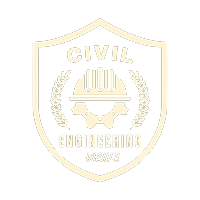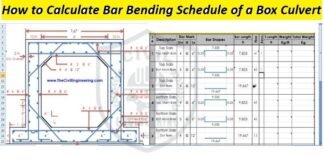Grades, Materials, And Process of Mixing of Concrete
In this article, we explain the concrete all details. Grades |Types And Process of Mixing of Concrete. Grades, Materials, And Process of Mixing of Concrete.Factors/Materials of Concrete |What’s the Grade of Concrete? |Basic Types Of Concrete |Proses of Making the Concrete |Types of mixing| Proses of Making the Concrete |Mostly Use The Grades of ConcreteGrades|Types and Process of Mixing of Concrete
Grades|Types And Process of Mixing of Concrete
Factors/Materials of Concrete
Factors of concrete are cement, beach, summations, and water. An Admixture of Portland cement and water is called as paste. So, concrete can be called an admixture of paste, Sand, Cement, and Crush. occasionally. The cement paste fleeces the face of the fine and coarse summations/Aggregates. when mixed completely and binds them. Soon after mixing the factors, hydration response thresholds which provide strength and a gemstone solid concrete are attained.
What’s the Grade of Concrete?
The grade of concrete denotes the strength needed for construction. For illustration, the M30 grade signifies that the compressive strength needed for construction is 30MPa. The first letter in grade “ M ” is the blend and 30 is the required strength in MPa. Grounded on colorful lab tests, the grade of concrete is presented in Mix Proportions. For illustration, for the M30 grade, the blend proportion can be 01:01:02, where 1 is the rate of cement, 1 is the rate of Selica/Sand and 2 is the rate of coarse/crush total grounded on the volume or weight of accouterments.
The strength is measured with concrete cells or cylinders by civil masterminds at the construction point. cell or cylinders are made during the casting of the structural member and after hardening it’s cured for 28 days. also, a compressive strength test is conducted to find the strength.
Mostly Use The Grades of Concrete
Some mostly used grades of concrete are M25, M20, and M15.for PCC work use for M15. For RCC Work use M20-grade of concrete.

Proses of Making the Concrete
Concrete is manufactured or mixed in proportions of cement volume. There are two types of concrete composites, i.e. nominal blend and design blend.
Nominal blend Mixx Concrete
A nominal blend is used for normal construction workshops similar to small domestic structures. The most popular nominal blend is in the proportion of 01:02:04.
Design Blend Mixx Concrete
Design Blend /mixed concrete is those for which blend proportions are perfected and grounded on colorful lab tests on a cylinder or cell for its compressive strength. This process is also called blend design. These tests are conducted to find suitable blend grounded on locally available material to gain the strength needed as per structural design.
A design Blend/mixed offers frugality in the use of constituents. Once suitable blend proportions are known, also its constituents are mixed at the rate as named.
Types of mixing
Two procedures are used for mixing, i.e. Hand Mixing or Machine Mixing. Grounded on the volume and quality needed, the suitable system of mixing is named. In hand mixing, each constituent is placed on a flat face and water is added and mixed with hand tools
Types of Machine Using in Concrete Mixing
In this case, the constituents are added in the needed volume to blend and produce fresh concrete. Once it’s mixed adequately it’s transported to the casting position and poured into formworks.
Colorful types of formworks are available which as named grounded on the operation. Poured concrete is allowed to be set in formworks for a specified time grounded on the type of structural member to gain sufficient strength. After junking of formwork, curing is done with colorful styles to make up for the humidity loss due to evaporation. Hydration response requires humidity which is responsible for setting and strength gain. So, curing is generally continued for a minimum of 7 days after junking of formwork.
Basic Types Of Concrete
Different Types Of Concrete which one used in construction
-
Plain Cement Concrete (P.C.C)
-
Reinforcements Cement Concrete (RCC)
plain concrete construction and corroborated concrete construction. In PCC, it’s poured and cast without the use of any rebar or steel. This is used when the structural member is subordinated only to the compressive forces and not bending. When a structural member is subordinated to bending, mounts are needed to repel pressure forces structural member as it’s veritably weak in pressure compared to contraction.
Generally, the strength of concrete in pressure is only 10 of its strength in contraction. It’s used as a construction material for nearly all types of structures similar to domestic concrete structures, artificial structures, heads, roads, coverts, multi-story structures, towers, islands, sidewalks, and superhighways. illustration of notorious and large structures made with concrete are Hoover Dam, Panama Canal, and Roman Pantheon.
It’s the largest mortal-made structure accouterments used for construction way of Concrete Construction The construction way opting amounts of accouterments for named blend proportion Mixing Checking of plasticity Transportation Pouring in formwork for casting wobbling for proper contraction junking of formwork after suitable time Curing member with suitable styles and needed time.
Read More
Definition And Difference B/w Main Bar And Distribution Bar
Uses of The Leveling And Principles of Differential Leveling
Bar Bending Schedule For Column With Footing
Design Principles for Staircase And Types
THANKS












[…] Grades | Types And Process of Mixing of Concrete […]